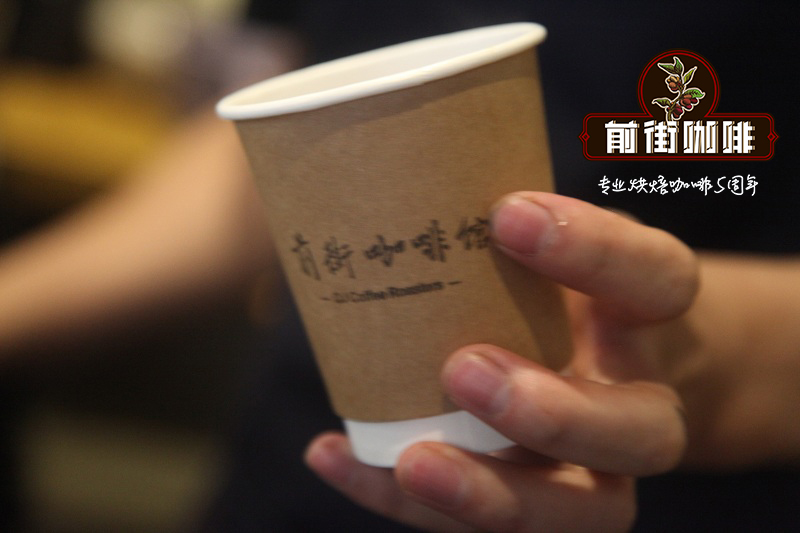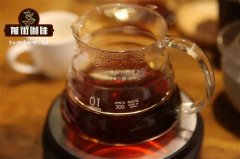Espresso is the soul of espresso what you should pay attention to when making espresso

Professional coffee knowledge exchange more coffee bean information please follow the coffee workshop (Wechat official account cafe_style)
Fresh coffee beans: fresh is the last word, famous beans are famous, but stale famous beans lose their fragrance impolitely. As far as Espresso is concerned, the coffee extracted from stale coffee beans, the consistency of coffee, the thickness of Cream, the color will be seriously affected, and its taste will be greatly reduced. Our experience is that coffee roasters are required to pack small quantities of coffee beans, strictly seal open coffee beans and keep them away from light and low temperature. Never use coffee beans that have been opened for more than seven days to ensure the perfection of every cup of coffee.
1. Blending: without a good mix, of course, you can't get a good espresso. It is matched to get the desired sweetness, aroma and smoothness. Mixed coffee must also be fresh. We recommend coffee within 4 days after baking.
two。 You will often find that some coffee is too dark in color. It produces a bitter taste and a charcoal smell. People who are good at blending espresso will bake it slightly lighter to maintain the aroma and sugar in the coffee.
3. Grinding: monitor the grinding process throughout the day so that the extraction process can be maintained at 25 murmur30 seconds. Do not adjust your powder pressing force to compensate for changes in the thickness of the powder.
4. Mill: a high quality mill must be used.
5. Powder: to get the top aroma, it must be freshly ground coffee. Grind and make according to the order quantity. When someone wants an espresso, they grind only one cup of coffee powder. Do not use coffee powder for more than 30 seconds to make espresso.
6. Cloth powder: after powdering, spread the coffee powder in the handle evenly and press the powder. Press the powder smoothly once with a force of 5 pounds, then once with a force of 30 pounds, and then with a force of 20 pounds. At the same time, the powder press rotates 720 degrees.
7. Minerals in water: water used in espresso must be filtered. In some cities, it is necessary to compensate for the minerals in the water. The water stored in the coffee machine for too long will be tasteless. Take a small glass of water, cool it and taste it. If there is a strange smell, the boiler must be emptied and water must be refilled.
8. Water temperature: the water temperature should be stable between 88 and 93 degrees. When choosing an espresso machine, you should pay attention to the stability of water temperature and temperature.
9. Stable water temperature: stable water temperature ensures the consistency of espresso.
10. Water pressure: the water pressure through espresso should be between 9 Murray and 10 pressure. This pressure ensures the production of coffee oil.
11. Boiler pressure: the boiler pressure determines the amount of steam that can be shifted. If the production of foam is not normal, you can try to adjust the boiler pressure. Of course, these tasks need to be done by professionals.
twelve。 Extraction time: the time for making double 1-ounce espresso is 25ml / ml for 30 seconds. No matter what the time, when the color of coffee becomes lighter, you should turn off the water pump. The goal is that the color of the coffee will be reddish brown and remain unchanged within 25 murals of 30 seconds.
13. Handles and bowls: the temperature of the handle should be as warm as the water used to make coffee. Therefore, to keep the bowl on the outlet head, it should be able to hold 16 murmur18 grams of coffee powder, and it is straight-walled. The curve in the bowl can lead to uneven extraction.
14. Timely: the time for quick and careful operation for powder extraction, cloth powder, pressing powder, preheating and starting to make coffee should not exceed 30 seconds.
15. Coffee machine cleaning: this is probably the biggest problem with using coffee machines today. If coffee machines, bowls and handles are not cleaned regularly, espresso will have a rotten smell.
16. Maintenance of the mill: the blades of the mill should be cleaned every day. When making coffee, you can also brush off the powder between the leaves and the powder compartment. The blades are replaced at least once a year. Only in this way can the powder particles have the maximum surface area.
17. Environmental factors: air temperature and humidity are changing throughout the day. Coffee is hygroscopic. The thickness of the grinder has to be constantly adjusted to achieve a cooking time of 25 Mill for 30 seconds. The effect of temperature is not as obvious as humidity, but exposure to high temperatures should also be avoided.
18. Coffee mugs: coffee cups should be preheated by a heat source other than the coffee machine. Taking a cup of water from the coffee machine to warm the cup will lower the temperature of the boiler water, resulting in uneven extraction. Coffee should be thick-walled and narrow-caliber to maintain its temperature and aroma.
19. Time: the importance of time should not be overemphasized. It's important to know that we always have potential to tap. Change any parameter and you will make progress or retrogression. Preparing espresso is an art and requires precision and scientific spirit. We've never had or seen the perfect coffee. Perfect coffee is more of a concept than a reality. The reason is that it is difficult to make espresso. Otherwise, why don't we design a machine to make the perfect coffee every time? The difficulty is that there are so many factors that determine the success of espresso that only the human brain and an enthusiastic heart can understand and control its complexity.
END
For more professional coffee exchanges, please scan the code and follow Wechat: qiannjie

Please indicate the source of the reprint.
Important Notice :
前街咖啡 FrontStreet Coffee has moved to new addredd:
FrontStreet Coffee Address: 315,Donghua East Road,GuangZhou
Tel:020 38364473
- Prev

How to make a cup of coffee for 3 minutes? can you judge the brewing state by the color? what do you think?
Professional coffee knowledge exchange more coffee bean information Please follow the coffee workshop (Wechat official account cafe_style) hand brewers have knowledge: professional hand pots are round belly-shaped copper pots, the advantage of this pot is that the vertical height of the water will not become too tilted when pouring water, the water control is more stable. As for the general household pot to control the amount of water, it is recommended that the water in the pot should be used when making coffee.
- Next

The importance of warming a cup to make coffee the difference between a warm cup and a lukewarm cup
Professional coffee knowledge exchange more coffee bean information Please follow the coffee workshop (Wechat official account cafe_style) for a perfect cup of coffee, a warm cup accounts for at least 20% of the credit. No matter how well the coffee is brewed, as long as it is poured into a cold cup, the temperature of the coffee immediately drops and the aroma is offset by more than half. Warm the coffee cup beforehand and pour the coffee into it.
Related
- Beginners will see the "Coffee pull flower" guide!
- What is the difference between ice blog purified milk and ordinary milk coffee?
- Why is the Philippines the largest producer of crops in Liberia?
- For coffee extraction, should the fine powder be retained?
- How does extracted espresso fill pressed powder? How much strength does it take to press the powder?
- How to make jasmine cold extract coffee? Is the jasmine + latte good?
- Will this little toy really make the coffee taste better? How does Lily Drip affect coffee extraction?
- Will the action of slapping the filter cup also affect coffee extraction?
- What's the difference between powder-to-water ratio and powder-to-liquid ratio?
- What is the Ethiopian local species? What does it have to do with Heirloom native species?

